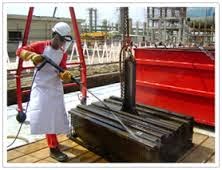Chemical cleaning is a method relevant in freeing walls and surfaces of
various equipment, heat exchangers, pipelines, vessels and kettles from
unwanted residues and bacterial contaminants. It is also essential in water
purification, treatment, disinfection and conditioning. With varying methods to
its name, several industries benefit from the procedure.
The most important facets of chemical cleaning gear on providing
environment-friendly alternatives to consumers. No matter where it is applied,
the aim is to primarily free the surface from contaminants. Below are the
different methods listed under this cleaning process.
Chlorine dioxide method
Biofilms and legionella are two of the most common microbes that reside
in water. Biofilms are residences or havens for organisms that contaminate
products in water solutions. Legionnaires disease is caused by legionella or a
Gram negative bacterium.
With the aid of chlorine dioxide, the biofilm or legionella may be
removed from the water system. It is a favored technique because it has the
capacity to prevent future formation of contaminants plus it can also be used
in both hot and cold water systems. Chlorine is proven to have a safer
solubility in water and has the capability to destroy THM precursors. It also
increases coagulation while it destroys phenols. It is not hazardous to health
and does not have any distinct smell.
Ultraviolet radiation
Another proven chemical cleaning process for water disinfection is the
ultraviolet or UV radiation. Aside from water, it may also disinfect air and
solid surfaces contaminated by microbes. Its capacity to disinfect was reported
since biology and light waves were introduced in the fields of science
research.
Ultraviolet radiation has several advantages. It is considered safe because there is no need to monitor any dangerous chemicals thus the results of disinfection are quickly attained. Any household or business establishment does not need to spend a lot since the initial system and operating costs are very minimal. It does not change the taste and smell of water as well plus they are easily installed and maintained.
Ozone purification
Ozone is one molecule that
contains three atoms of oxygen and is naturally produced by a series of
chemical reactions. It may come from the ultraviolet rays of the sun as well as
from waterfalls and thunderstorms. It is also a chemical cleaning process used
in wide areas of water treatment and purification. It is used in potable water
treatments and in the broader municipal wastewater sites. It is also being
widely recognized in several industries.

No comments:
Post a Comment